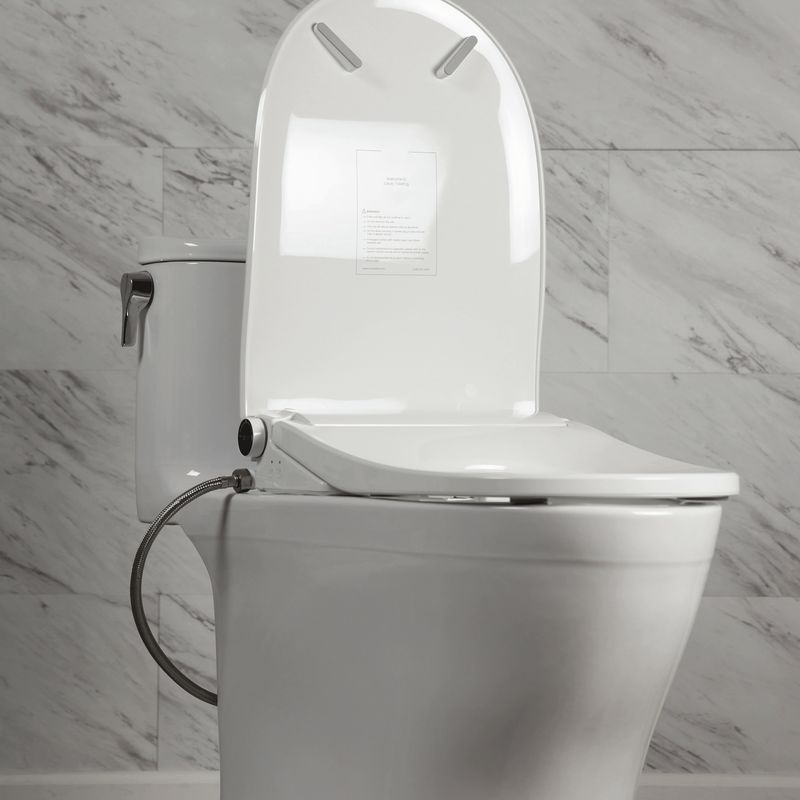 English
English
Jabra Sanitary is a sanitaryware supplier offering toilets, sinks, faucets, bathtubs, etc., at competitive prices. If you're a distributor, wholesaler, or project contractor, get a quote today!
 $23.9 Limited-time Offer
$23.9 Limited-time Offer Consignment Policy
Consignment Policy 20 Years of Experience
20 Years of Experience
A clogged kitchen sink can quickly become one of the most frustrating problems to deal with in any home. Whether it's an annoying slow drain or a complete blockage, knowing how to unclog a kitchen sink can save you both time and money.
Instead of calling a plumber immediately, you can try several simple solutions that can unclog your sink effectively.
Ready to take control of your kitchen sink? Let's explore the common causes of kitchen sink clogs first.
Then, we share easy solutions to clear blockages and provide tips on preventing clogged kitchen sinks in the first place. We'll also explain when it's time to call a professional plumber.
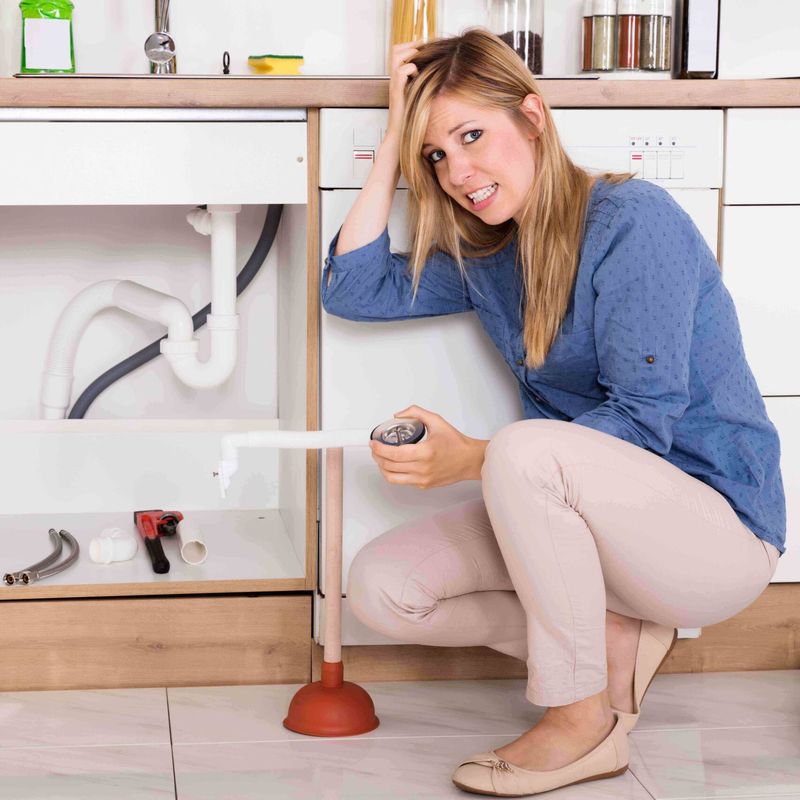
Table of Contents
Common Causes of Kitchen Sink Clogs
Solutions to Unclog Your Sink
How to Avoid Clogging the Kitchen Sink
Understanding Your Sink's Plumbing System
When To Call A Professional
FAQs
Final Thoughts
Common Causes of Kitchen Sink Clogs
Understanding the root cause of your clogged kitchen sink is the first step in finding the right solution. Several factors can contribute to a blocked sink, and knowing them can help you prevent future issues.
Here are some of the most common causes of kitchen sink clogs:
Food Scraps and Grease
One of the leading causes of kitchen sink clogs is food waste and grease buildup. Over time, grease can harden and form a thick layer that traps food particles.
Even small amounts of grease or oils that are poured down the drain can contribute to this issue. <Also learn how to avoid bad smell in bathroom sink>
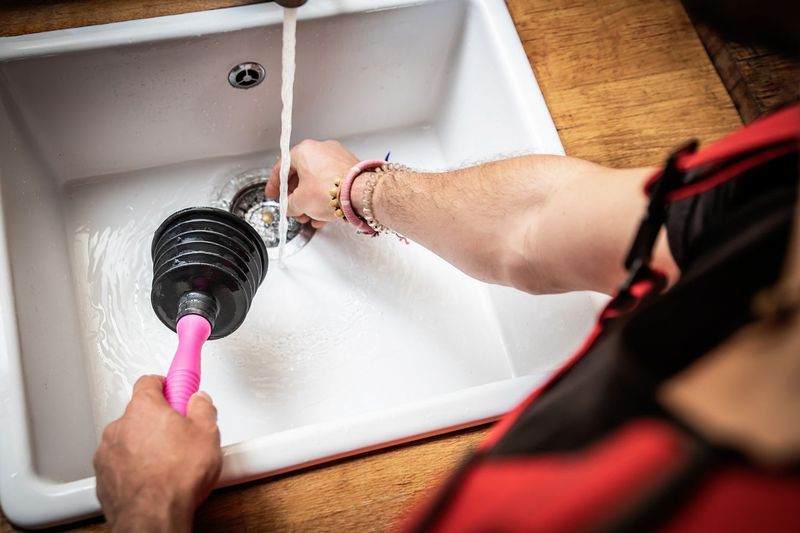
Soap Scum Buildup
If you've been using soap in your kitchen sink, you might have noticed a gradual buildup of soap scum, especially around the drain area. Soap combined with water minerals can create a thick and sticky layer, slowing water flow.
Hair
While it's more common to find hair in bathroom sinks, long hair or pet hair can sometimes make its way into the kitchen sink. Hair can create a tangled mess in the drain.
Foreign Objects
Sometimes, small items like utensils, straws, or even plastic wrappers find their way into your sink drain. These objects can obstruct the pipe.
Pipe Corrosion
Over time, older pipes can start to deteriorate, leading to corrosion and narrowing of the pipes. This can make it easier for debris to get stuck and harder for water to flow through.
In some cases, this can contribute to recurring clogs.
Clogged Garbage Disposal
If your kitchen sink has a garbage disposal, the disposal unit itself may be clogged. Overloading the garbage disposal with hard-to-grind items like bones or fibrous vegetables can cause blockages.
Clogs in the Trap
The trap is the U-shaped pipe located beneath the sink. Over time, food debris, grease, and other particles can collect in this section. If water is draining slowly from the sink, this is often the culprit.
Solutions to Unclog Your Sink
If your kitchen sink is clogged, don't panic. There are several easy DIY methods you can try to clear the blockage. In this section, we'll explore how to unclog a kitchen sink and what to use to unclog a kitchen sink.
1. Pour Boiling Water
One of the simplest and most effective methods to clear a kitchen sink clog is by pouring boiling water down the drain. The hot water helps break down grease and other debris.
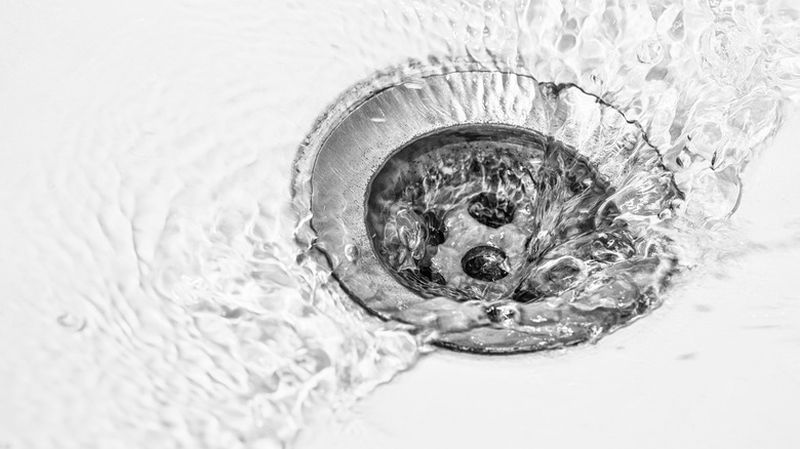
How to do it:
- Boil a pot of water.
- Carefully pour boiling water down the drain in stages, allowing the water to work its way through the clog.
- Repeat if necessary.
This method works best for minor clogs caused by grease or soap scum.
2. Use a Plunger
A plunger is a great tool to quickly clear a clog in your kitchen sink. The suction created by the plunger can dislodge debris and help restore water flow.
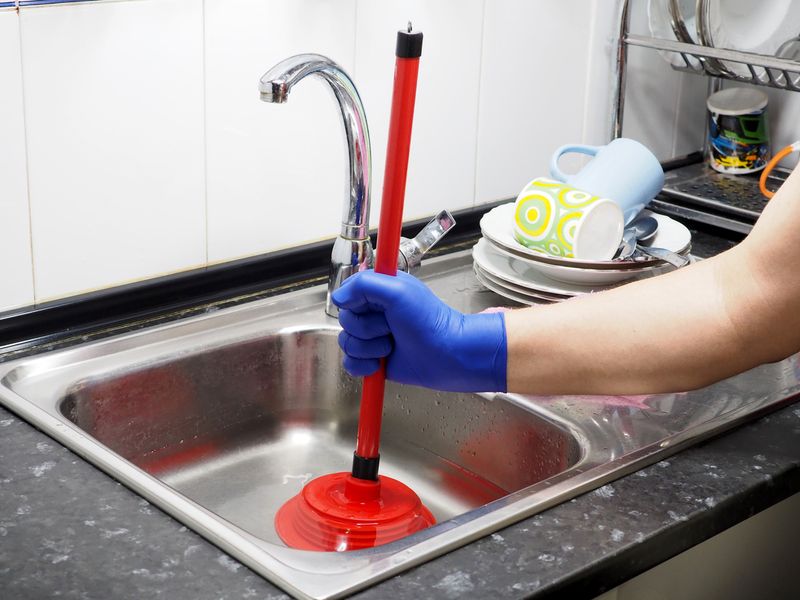
How to do it:
Fill the sink with a few inches of water to help create suction.
- Position the plunger over the drain and push down firmly.
- Pull up quickly to create suction.
- Repeat the plunging motion several times.
- Check if the clog is cleared by running water through the sink.
Make sure to use a clean plunger specifically for kitchen use to avoid cross-contamination.
3. Try a Plumber's Snake
A plumber's snake (also called a drain auger) is a long and flexible tool. It is designed to reach deep into your drain and break up stubborn clogs. This method is ideal for clogs that are deeper in the pipes.
How to do it:
- Insert the end of the snake into the drain.
- Turn the handle to feed the snake down the drain and break through the clog.
- Once the blockage is cleared, slowly retract the snake.
A plumber's snake can be a bit tricky if you've never used one, but it's a very effective method for tough clogs.
4. Use Salt & Hot Water
This is a natural and eco-friendly method to clear a kitchen sink clog. Salt can help break down grease and other debris while hot water flushes everything through the pipes.
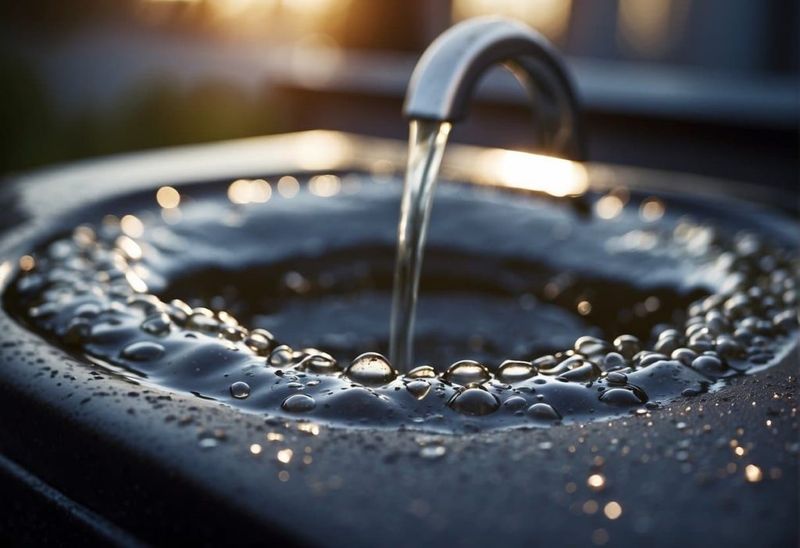
How to do it:
- Pour half a cup of salt down the drain.
- Follow up with boiling water.
- Let it sit for about 10-15 minutes, then flush with more hot water.
This method is ideal for grease clogs but works best with small blockages.
5. Baking Soda and Vinegar
A combination of baking soda and vinegar is a time-tested solution for clearing kitchen sink clogs. This natural solution creates a fizzing reaction that can break up debris and clean the pipes.
How to do it:
- Pour 1/2 cup of baking soda down the drain.
- Follow with 1/2 cup of vinegar.
- Cover the drain and let the mixture sit for about 30 minutes.
- Flush with hot water.
This method is effective for minor clogs and is great for routine maintenance.
6. Clear the Trap
The U-shaped pipe (also known as the trap) beneath your sink can collect debris and cause blockages.
How to do it:
- Place a bucket underneath the trap to catch any water.
- Use a wrench to loosen the nuts that hold the trap in place.
- Remove the trap and clear any debris inside.
- Reassemble the trap and run water to check if the clog is gone.
This method is more hands-on but can be highly effective for clogs near the drain.
7. Use Dish Soap
If the clog is caused by grease or fat buildup, dish soap can help break it down and make it easier to clear the blockage.
How to do it:
- Add a few squirts of dish soap directly into the drain.
- Follow with boiling water.
- Let it sit for a few minutes, then flush with more water.
This method works best for grease clogs. It is a simple and effective solution.
8. Use a Wet/Dry Vacuum
If you have a wet/dry vacuum at home, it can be a handy tool for removing stubborn clogs. The vacuum will suck up the debris.
How to do it:
- Set the vacuum to liquid mode.
- Place the vacuum hose over the drain and create a seal.
- Turn the vacuum on to suck up the debris.
This method is great for clogs that are difficult to break up with a plunger or snake.
9. Try an Auger Unclogger
An auger unclogger is similar to a plumber's snake. But it is designed for smaller pipes like those found under a kitchen sink. It can break through tougher blockages and is easier to use than a full-sized plumber's snake.
How to do it:
- Insert the auger into the drain and twist it to break through the clog.
- Once the obstruction is cleared, flush the drain with hot water.
This is an effective tool for tougher clogs that don't respond to plunging.
10. Reset the Garbage Disposal
If your kitchen sink has a garbage disposal and it's clogged, try resetting the unit before taking any further action. Often, the disposal might be jammed, causing the sink to drain slowly or not at all.
How to do it:
- Turn off the disposal and unplug it if possible.
- Locate the reset button on the bottom of the disposal and press it.
- Run the water and turn the disposal back on.
This can solve issues related to garbage disposal.
11. Use a Coat Hanger
In a pinch, a coat hanger can be used as a makeshift drain-cleaning tool.
How to do it:
- Unwind the coat hanger to create a long and straight wire.
- Bend one end into a hook shape.
- Insert the hook into the drain and carefully fish out any debris.
This method can be useful for simple blockages near the top of the drain.
12. Use a Chemical Drain Cleaner
Chemical drain cleaners are available at most home improvement stores and can be effective at clearing tough clogs. However, they should be used sparingly, as they can damage pipes over time and are harmful to the environment.
How to do it:
- Follow the manufacturer's instructions on the product.
- Pour the cleaner into the drain and wait for the recommended time.
- Flush with hot water.
Chemical cleaners should be a last resort due to their potential to cause damage.
How to Avoid Clogging the Kitchen Sink
Prevention is always better than cure. When it comes to kitchen sink clogs, there are several simple habits you can adopt to keep your drains clear and running smoothly.
By following these tips, you can significantly reduce the chances of facing a clogged kitchen sink in the future.
1. Don't Pour Grease Down the Drain
One of the biggest culprits behind kitchen sink clogs is grease. Grease solidifies as it cools. Over time, it builds up inside your pipes. Instead of pouring cooking oil or grease down the sink, dispose of it in a container and throw it away.
2. Use a Drain Strainer
A drain strainer or filter is a simple and affordable tool that can catch food particles, hair, and other debris before they enter your pipes. Place one over your kitchen sink drain to help prevent clogging. Empty the strainer regularly to keep it working effectively.
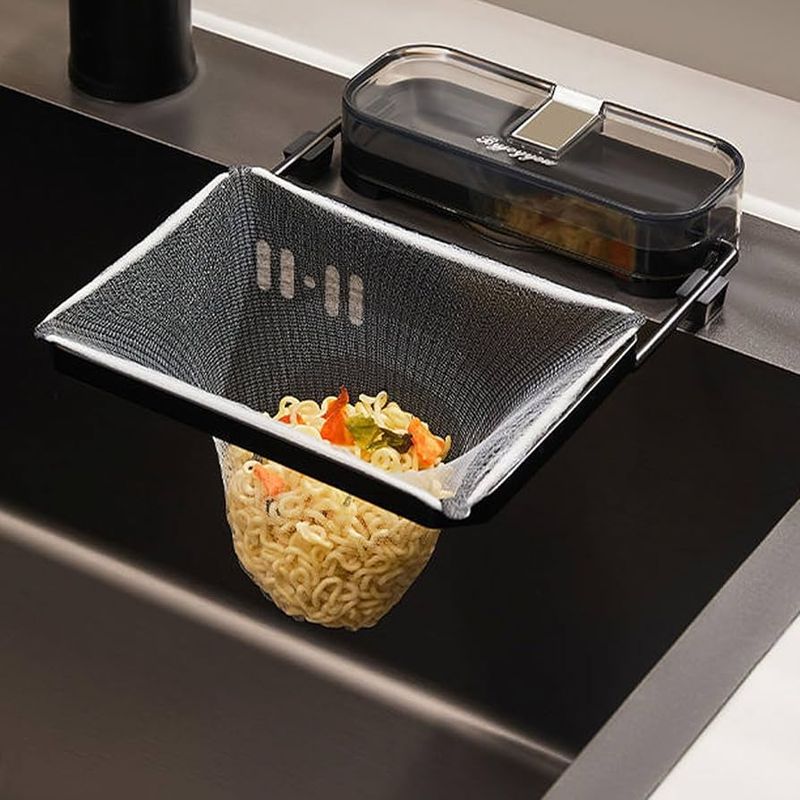
3. Run Hot Water After Each Use
After washing dishes or preparing food, run hot water down the drain for about 30 seconds. This helps to wash away any grease or food particles that may be lingering in the pipes. It's an easy habit to form and can prevent the buildup of debris.
4. Avoid Putting Fibrous or Hard Foods in the Disposal
If your kitchen sink has a garbage disposal, be mindful of what you put down it. Avoid fibrous foods like celery, corn husks, or potato peels, as they can clog the disposal and drain. Additionally, do not dispose of hard items such as bones or fruit pits.
5. Clean the Garbage Disposal Regularly
Your garbage disposal can be a source of clogs if not cleaned regularly. Run cold water while using the disposal to help flush food particles through the pipes. Periodically, clean the disposal by grinding up ice cubes and citrus peel.
6. Don't Overload the Sink
Rinse a large amount of food debris down the sink at once, but overloading it can lead to clogs. Try to dispose of large food scraps in the trash before washing your dishes. It is to avoid putting too much strain on your sink's plumbing system.
7. Use Baking Soda and Vinegar for Maintenance
Pour a tablespoon of baking soda down the drain, followed by a cup of vinegar. Let it sit for 15-20 minutes, then flush it with hot water. This simple solution helps keep your pipes clear and can also neutralize odors.
8. Regularly Check the Trap
The trap under your sink is a prime area where debris can be collected. Every few months, remove the trap to clean it out. This ensures no debris is building up in this area and causing a potential blockage.
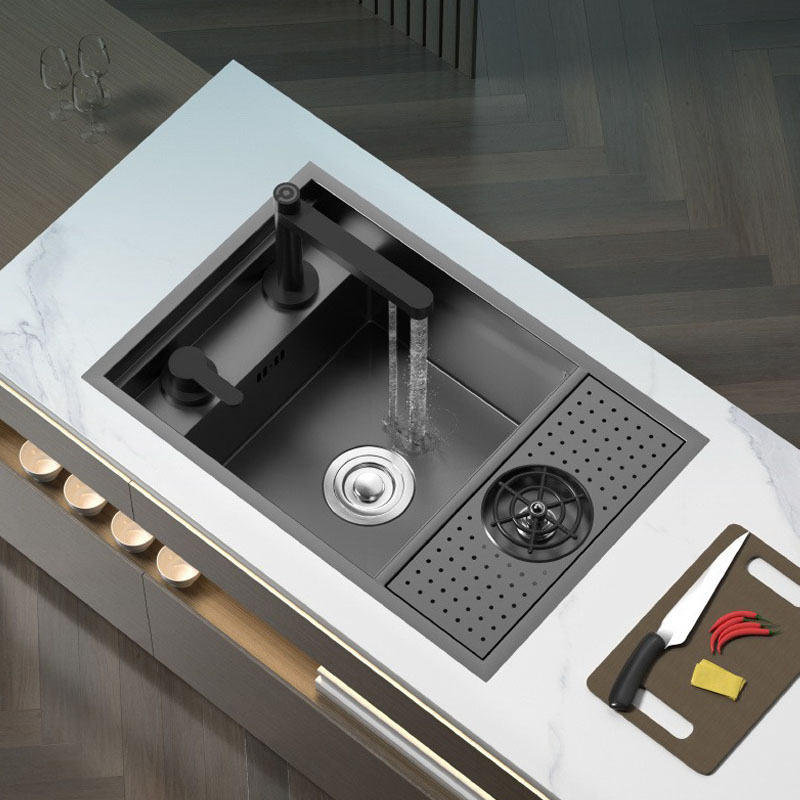 Ads
Ads
Undermount Double Bowl Workstation Sink
Here is the Undermount Double Bowl Workstation Sink H01, a versatile and functional addition to your kitchen. This double bowl workstation sink features a unique lifting faucet with dual hot and cold water outlets, easily adjustable to meet your needs without obstructing your workspace.
Understanding Your Sink's Plumbing System
To effectively fix a clogged kitchen sink, it's essential to understand the plumbing system that makes your sink work. While it might seem complex at first glance, the basics of kitchen sink plumbing are quite straightforward. Let's break it down:
1. Sink Drain
The drain is the opening at the bottom of your sink where water flows out. This is where most clogs occur, whether it's food debris, grease, or soap scum.
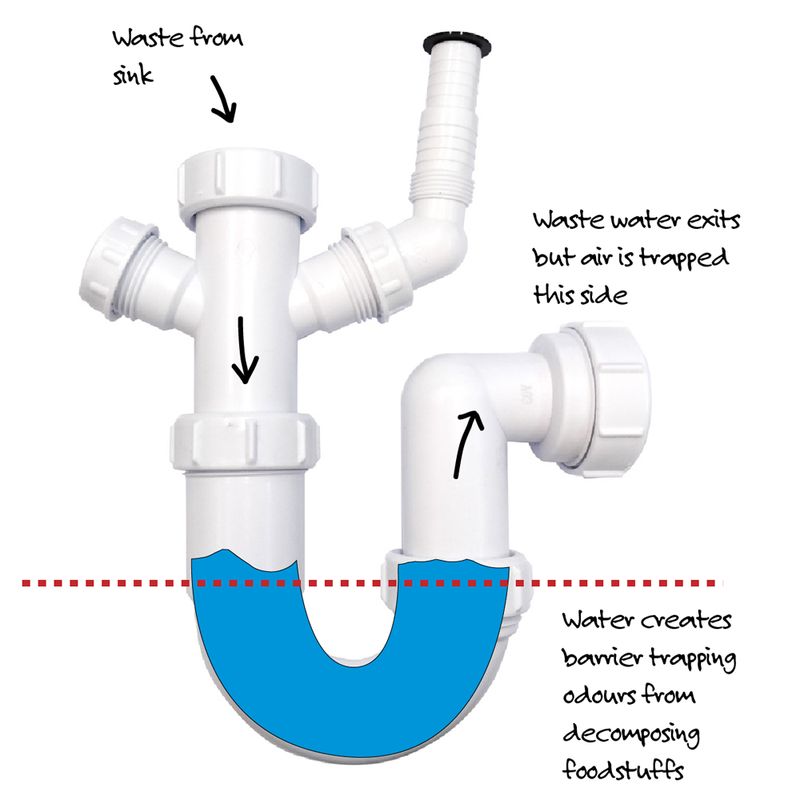
2. P-Trap
Located just beneath your sink, the P-trap is a curved pipe. It prevents sewer gases from entering your home. It holds a small amount of water at all times to act as a barrier. However, it's also a prime spot for clogs to form, especially if larger particles or grease get trapped here.
Drainpipe
The drainpipe carries wastewater from your sink and out to your home's main sewer line or septic system. If the pipe is partially blocked, you may notice slower drainage. If blocked, water won't drain at all.
Garbage Disposal (if you have one)
If your sink has a garbage disposal, it's important to understand how it works with your plumbing system. The disposal grinds food waste, sending it down the drain. If something gets stuck in the disposal or if it's not working properly, it can cause a clog or even damage your plumbing system.
Vent Pipes
Vent pipes are designed to allow air to flow into the plumbing system. They help maintain proper pressure so that wastewater can flow freely. A blocked vent can cause drainage issues or even make your sink gurgle.
When To Call A Professional
While many kitchen sink clogs can be tackled with DIY methods, there are times when calling a professional plumber is the best way to unclog a kitchen drain.
Understanding when to make the call can save you time, effort, and potentially expensive damage to your plumbing system. Let's explore when you should consider bringing in the experts:
The Clog is Deep or Persistent
Deep blockages can occur in the drainpipe, beyond the P-trap, or even in the main sewer line. These kinds of blockages are difficult to reach with standard household tools. Continuing to try DIY methods can make the problem worse.
A professional plumber has specialized equipment, such as a hydro-jetter, that can clear deep clogs safely and effectively.
The Sink Drains Slowly, But No Obvious Clog Is Visible
Slow drainage is often the first sign of a problem in the plumbing system. But sometimes the source of the issue isn't immediately obvious.
If your sink isn't fully clogged but the water is draining very slowly, it could be due to a buildup of grease, soap scum, or other debris deep within the pipes. This gradual buildup can cause a partial blockage that is difficult to remove without professional-grade tools.
A plumber can inspect your system with a camera to identify and fix the source of the slow drainage without causing damage to your pipes.
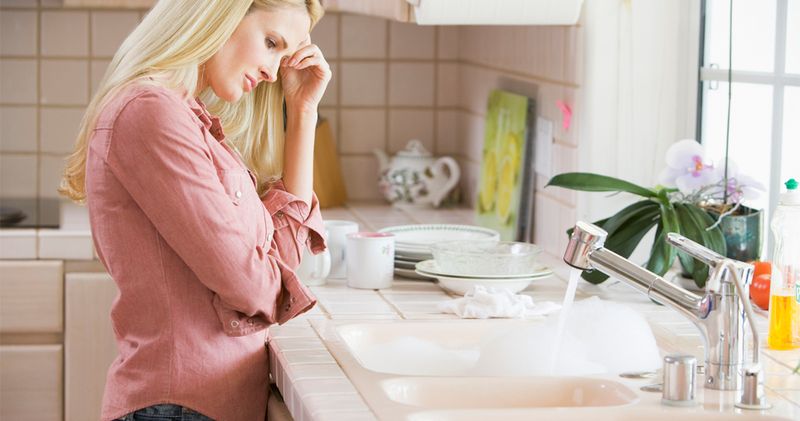
You Hear Gurgling Noises or Foul Odors
Gurgling noises coming from your sink or drain, combined with foul odors, are warning signs for your plumbing. Gurgling often happens when air is trapped in the pipes.
It can be caused by a blockage in the vent system or the drain. A foul odor may indicate rotting food debris or stagnant water in the pipes.
These issues may not be easily solvable with basic at-home methods. A plumber will be able to diagnose the cause and clear the obstruction effectively.
You've Already Tried Everything
You might have already tried all the typical home remedies, from boiling water and baking soda to using a plunger and auger. If these DIY techniques have failed to clear the clog, it's a sign that the problem is beyond what can be solved with basic tools.
Persistent clogging or repeated blockages may indicate a bigger issue with your plumbing system, such as tree root intrusion or damaged pipes.
Calling a professional plumber will ensure the problem is addressed with the proper expertise and tools.
The Clog Is Related to Your Garbage Disposal
If the clog is related to your garbage disposal and simple fixes (like resetting the disposal or cleaning the blades) haven't worked, it's time to call in a professional.
Garbage disposal issues can be tricky. Improperly attempting to repair or unclog it yourself could result in further damage or even injury.
A professional plumber will be able to fix any issues with the garbage disposal or its connection to your sink's plumbing system.
You Suspect a Leak or Damage
Sometimes, clogs are just a symptom of a larger problem, such as a cracked pipe or a leak. If you notice water pooling under the sink, dampness on the walls, or the sound of dripping water, the clog might be caused by damage to the plumbing system.
In these cases, it's essential to call a plumber right away. Ignoring potential leaks or damage can lead to costly repairs and water damage down the line.
You're Uncomfortable with DIY Plumbing
If you're feeling unsure or uncomfortable about unclogging a kitchen sink, don't hesitate to call a plumber. Without the right knowledge or tools, you could accidentally make the problem worse. It's always better to leave it to the professionals if you're not confident in your abilities.
FAQs
Here is more information about unclogging a kitchen sink:
Is it bad to use a plunger on a sink?
Plunging a kitchen sink is generally safe. Just be cautious with sinks that have garbage disposals. If it doesn't work after a few tries, try other methods or call a plumber.
Why is my sink drain slow and gurgling?
Slow drainage and gurgling are signs of a partial clog or vent issue. This can happen from grease, soap scum, or debris buildup. Try plunging, baking soda and vinegar, or a plumber's snake.
Does boiling water always unclog a sink?
Boiling water works on grease and soap clogs but not on solid debris. If it doesn't help, try other methods like a plunger or plumber's snake.
How often should drains be cleaned?
Clean or unclog your kitchen sink drain every 2-3 months to prevent clogs. If you notice slow drainage or odors, clean sooner.
How long does it take for vinegar and baking soda to unclog?
The process takes 15-30 minutes. Pour boiling water, then add baking soda and vinegar. Let it fizz, and rinse with more hot water. It works best for light clogs.
Final Thoughts
Clogged kitchen sinks are a common nuisance, but with the right knowledge and tools, most issues can be resolved quickly. Whether you're dealing with a simple blockage or a more stubborn clog, there are various solutions to try, from plunging and boiling water to using natural remedies like baking soda and vinegar.
Understanding your sink's plumbing system and knowing when to call in a professional plumber are key steps in preventing and solving clogs. Regular maintenance, such as periodic drain cleanings, can help keep your plumbing system running smoothly for years to come.
Still don't know what to do when the kitchen sink is clogged? Jabra kitchen sink brand specializes in solving clogged kitchen sinks better than anyone else. It offers kitchen sink unclogging services with every purchase.









